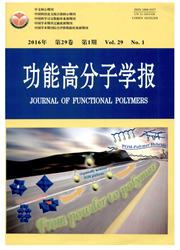

 中文摘要:
中文摘要:
使用DFT方法在B3LYP/TZVP//B3LYP/SVP水平上对正丁基锂(n-BuLi)引发体系、聚苯乙烯活性种(PSLi)体系以及P配合物对以上两体系中可能存在的缔合物几何结构的影响进行了能量计算。结果表明,n-BuLi的六缔合体在气相和溶剂(苯乙烯和四氢呋喃)中均最为稳定。使用1-锂乙基苯(HStLi)作为PSLi的模型化合物对其可能存在缔合物的几何结构进行优化和能量计算,结果表明其二缔合体最为稳定。引入P配合物后,n-BuLi引发体系和PSLi体系的缔合物结构均发生变化,两者的单量体在P配合物的缔合作用下最为稳定。增加P配合物的摩尔分数,两者的单量体更加稳定,单量体从与P配合物形成的缔合物中解缔合所需要的能量更大。
 英文摘要:
英文摘要:
Quantum-chemical density functional theory (DFT) calculations at B3LYP/TZVP//B3LYP/SVP level were performed to find the most stable aggregates of n-butyllithium (n-BuLi) and polystyryllithium (PSLi) living species during anionic bulk polymerization of styrene. Results showed that the hexamers of n-BuLi were the most stable aggregates in both gas and solution. In addition, dimeric PSLi was the most stable aggregates according to the DFT calculations using HStLi as the model of PSLi. To interpret the effect of P-ligands on the structure of n-BuLi and PSLi aggregates during anionic polymerization of styrene, DFT calculations on the possible geometrical structures and relative stabilities of the living species and initiators in the presence of P-ligands were carried out. The presence of P-ligands facilitated the deaggregation of PSLi dimers and n-BuLi hexamers to form more stable mixed aggregates of P-ligands→monomeric n-BuLi and P-ligands→monomeric PSLi. The higher the mole fraction of P-ligands coordinated with n-BuLi (or PSLi) was, the higher their stabilities to bind n-BuLi (or PSLi) and their energies required to disaggregate n-BuLi (or PSLi) from the mixed aggregates were.
 同期刊论文项目
同期刊论文项目
 同项目期刊论文
同项目期刊论文
 期刊信息
期刊信息
